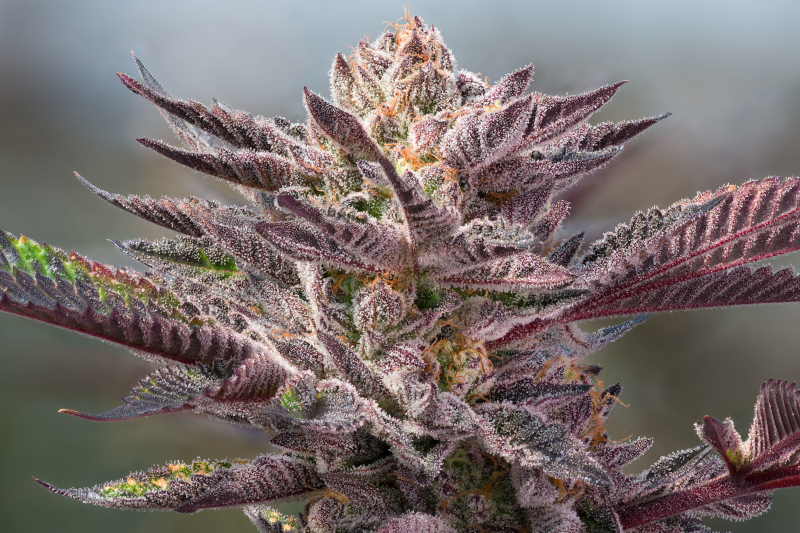Discover the Mysteries of Cannabis Colors
Unveiling the Secrets Behind Cannabis Hues
Explore the fascinating reasons behind the vibrant colors of cannabis plants and what they mean for growers and enthusiasts alike.
The Legal History of Cannabis
Cannabis has had a wild legal journey — from being a sacred plant in ancient civilizations to a feared substance banned worldwide. In this post, we’re diving deep into how cannabis laws have shifted over centuries, why they changed, and where we stand today. Buckle up — it’s a bumpy ride through history, politics, and public perception.
Cannabis seeds can last for years if stored properly. In this blog, we’ll cover how long marijuana seeds stay viable, the best storage methods, and how to avoid common mistakes that ruin seed quality.
Green Thumb Starter Kit: A Beginner’s Guide to Growing Weed Seeds Successfully
Unlock the secrets to successful cannabis cultivation with our beginner-friendly guide, designed to transform your green thumb dreams into reality. Discover each step of the journey, from seed selection to harvest, and embark on a rewarding adventure that promises lush, thriving plants.
Why Some Cannabis Plants Turn Purple, Blue, or Black During Growth
Cannabis growers love colorful plants—not only do they look stunning, but they also add unique flavor and character to your harvest. Strains that turn purple, blue, or even nearly black are some of the most sought after on the market today. But why do these dramatic colors appear? Is it just genetics, or can you as a grower influence the outcome?
In this guide, we’ll break down the science behind cannabis coloration, explain how growing conditions affect pigment expression, and highlight some of the best strains at MJ Seed Shop known for their vibrant hues.
What Causes Cannabis Plants to Change Color?
Not every cannabis plant will turn purple or blue. These colors appear when certain natural factors line up:
Genetics
The most important factor is strain genetics. Some cannabis varieties carry higher levels of natural plant pigments (called anthocyanins). Strains like Purple Haze and Granddaddy Purple are genetically predisposed to showcase those vibrant colors.
Temperature
Cooler nighttime temperatures often encourage color development. A 10–15°F drop between day and night can trigger anthocyanin expression, turning leaves and buds purple or blue.
pH and Nutrients
Soil pH and nutrient availability play a role in how pigments show up. For example, slight nutrient shifts can enhance purple tones, but nutrient deficiencies can also cause unhealthy discoloration.
Light Exposure
Plants grown with higher UV or intense sunlight often display deeper colors. Light stress, when controlled carefully, can bring out anthocyanins.
Anthocyanins – The Pigment Behind Purple Cannabis
The main compounds responsible for these colors are anthocyanins—the same pigments found in blueberries, blackberries, and grapes.
- In cannabis, anthocyanins can make buds appear purple, red, blue, or nearly black, depending on pH and environmental conditions.
- Plants with naturally high anthocyanin genetics will show color more vividly.
- Healthy anthocyanin expression = rich purple buds.
- Stress-induced discoloration (nutrient burn, deficiency, or disease) = unhealthy yellowing or brown spots.
In other words: purple is beautiful when it comes from genetics and proper conditions—not when it’s a symptom of poor plant health.
Popular Purple, Blue, and Black Cannabis Strains
At MJ Seed Shop, we carry several strains known for their ability to display rich colors:
Purple Haze
A legendary sativa with uplifting effects and a psychedelic reputation. Known for its vibrant purple buds and sweet, earthy flavor.
Granddaddy Purple
An indica classic with deeply relaxing effects. Its rich purple coloration makes it one of the most recognizable cannabis strains in the world.
Blue Dream
One of the most popular hybrids, Blue Dream delivers a fruity berry flavor with balanced effects. Its genetics sometimes produce blue or purple hues under the right conditions.
Black Widow
A potent, resin-heavy strain with striking dark leaves and buds that can take on deep purple to almost black tones.
Purple Kush
Beloved for its earthy sweetness and ease of growth. Known to turn deep violet during flowering, especially in cooler climates.
How Growers Can Encourage Color Expression
If you want your cannabis plants to show purple, blue, or black shades, here are a few proven tips:
- Temperature Management – Lower nighttime temperatures (by about 10–15°F) during flowering can encourage pigment expression.
- Genetic Choice – Start with strains that already have strong purple genetics (like Granddaddy Purple or Purple Kush).
- Nutrient Balance – Avoid deficiencies, but be aware that anthocyanins show up best when plants aren’t overloaded with nitrogen.
- Lighting – Strong, consistent lighting encourages healthy pigment production. Supplemental UV can also intensify color.
- Stress Caution – Some stress enhances color, but too much can damage your plants. Healthy plants display color best.
Should You Chase Purple Plants?
While purple or black cannabis looks impressive, it’s important to remember:
- Color doesn’t always equal potency. A purple plant isn’t necessarily stronger than a green one.
- Flavor and aroma may change. Anthocyanin-rich strains often carry fruity, berry-like notes.
- Focus on genetics first. You can’t force a strain without color potential to suddenly turn purple.
Think of purple buds as a bonus feature of good genetics and healthy growing—not as the main goal.
Final Thoughts
Colorful cannabis is a joy to grow and a favorite among collectors and connoisseurs. While genetics play the biggest role, environment and care can enhance these hues. Whether you’re after deep purple buds of Granddaddy Purple, the blue accents of Blue Dream, or the dark tones of Black Widow, MJ Seed Shop has the seeds to get you started.
What causes cannabis plants to turn purple?
The purple hue in cannabis plants is often due to the presence of anthocyanins, which are pigments that can be influenced by temperature, light, and genetics.
Do color changes affect the potency of cannabis?
While color changes can indicate certain genetic traits, they do not necessarily affect the potency or quality of the cannabis.
Can environmental factors influence cannabis color?
Yes, factors such as temperature, pH levels, and nutrient availability can impact the color of cannabis plants.
Are colorful cannabis plants more desirable?
Colorful cannabis plants are often more visually appealing, but desirability depends on personal preference and the specific traits a grower is looking for.
How can I encourage color changes in my cannabis plants?
To encourage color changes, growers can manipulate environmental conditions such as temperature and light exposure, but should always consider the plant’s health and genetics.
Unlock the potential of your garden with our premium cannabis seeds.

